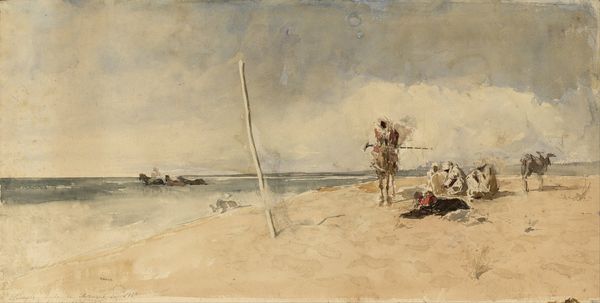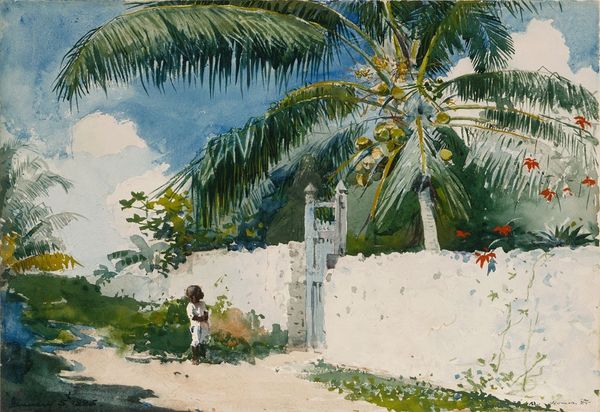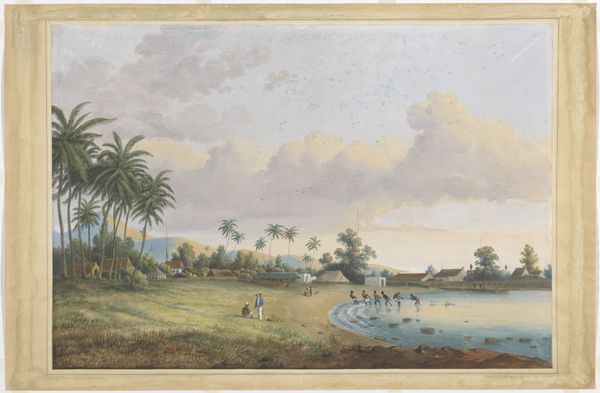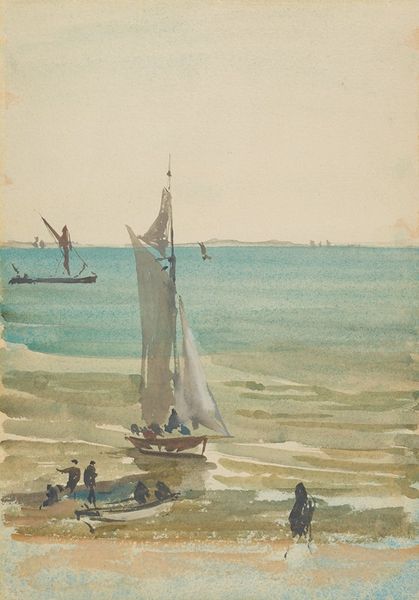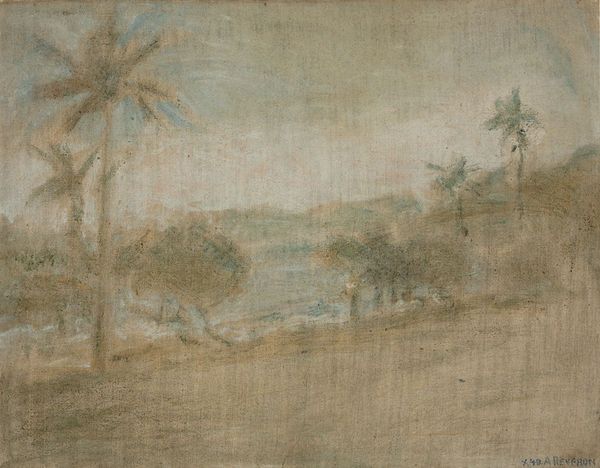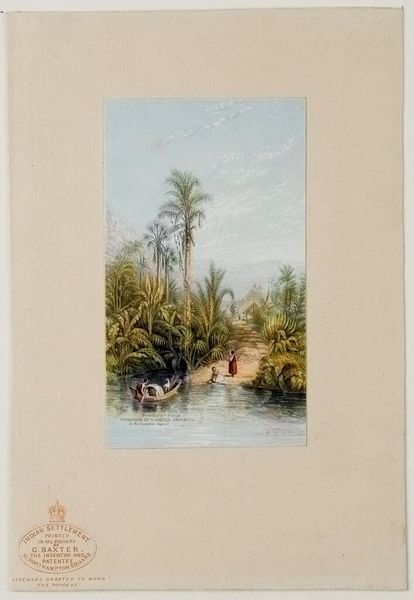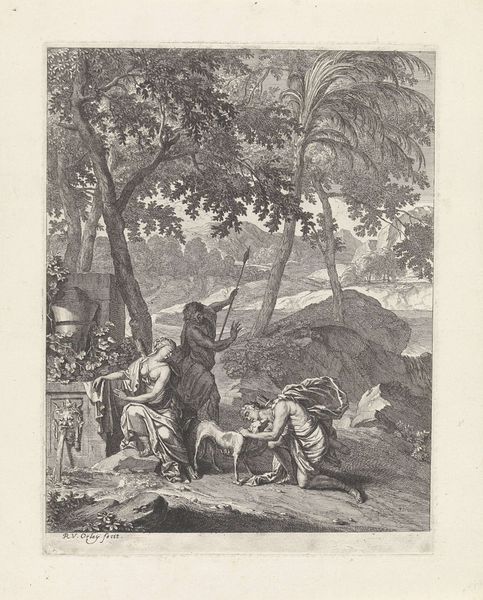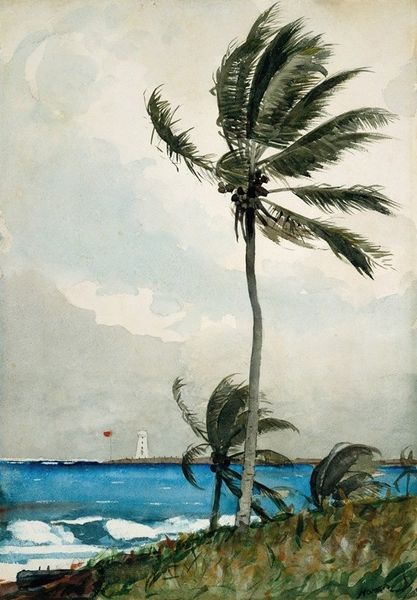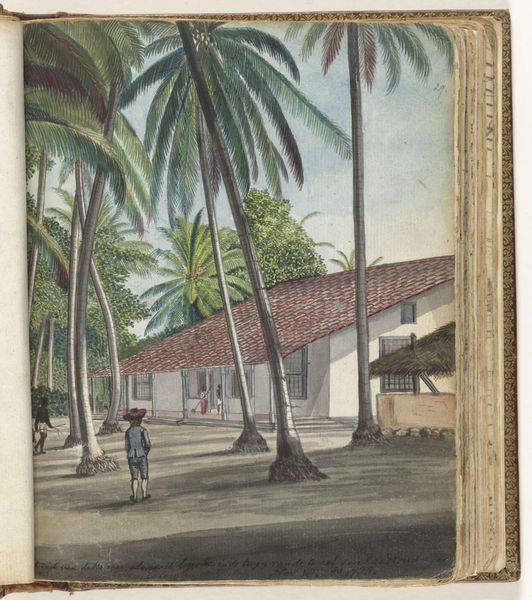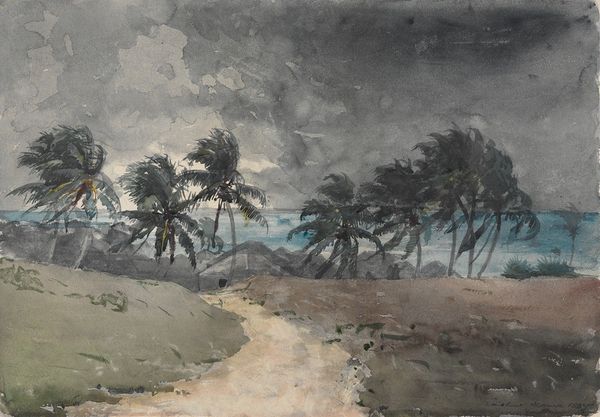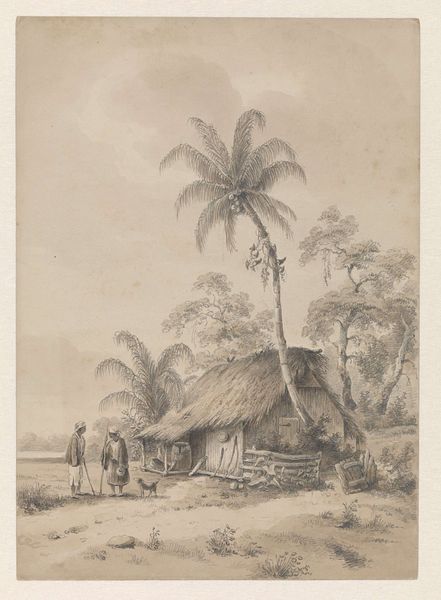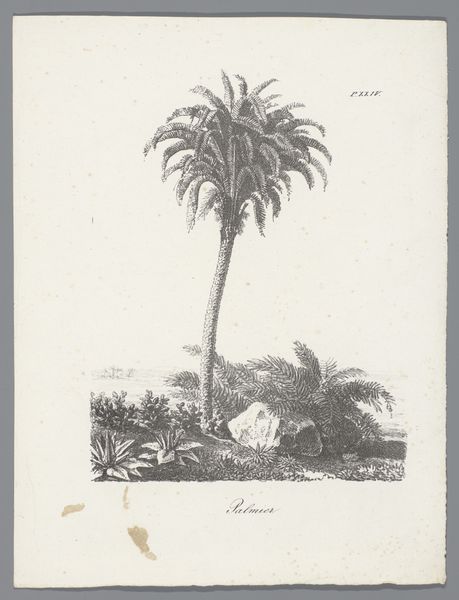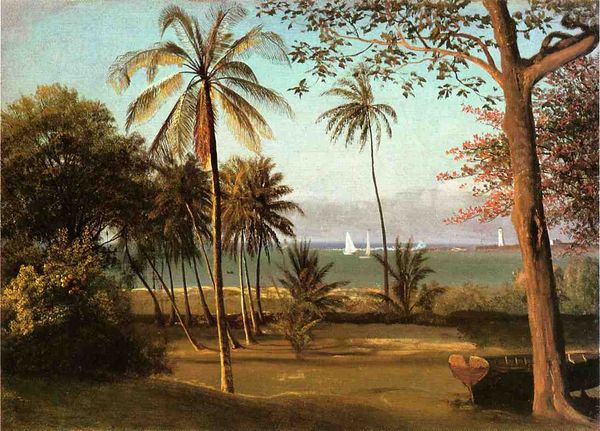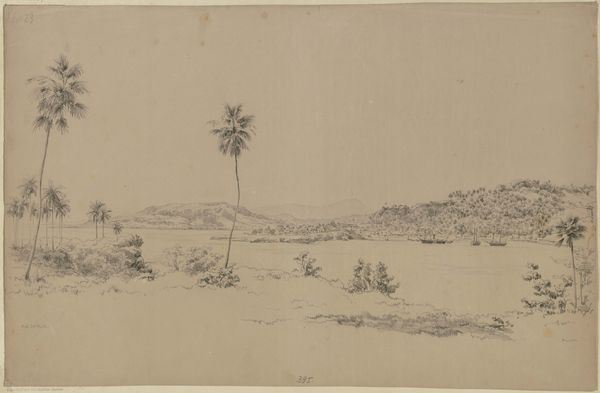
plein-air, watercolor
#
water colours
#
impressionism
#
plein-air
#
landscape
#
figuration
#
watercolor
#
watercolor
#
realism
Copyright: Public Domain: Artvee
Curator: Here we have Winslow Homer’s watercolor, "The Buccaneers," created in 1885. He truly captures a sense of place. What are your initial impressions? Editor: A languid, tropical haze... palm trees swaying. And yet, there’s a disquiet lurking beneath the surface. Something about the way the figures are grouped and framed against that horizon feels weighty, expectant. Curator: Homer painted this during one of his trips to the Bahamas, and you touch upon something interesting. Though visually appealing, works such as these often flatten complex power dynamics during an era of pervasive colonialism and cultural exchange—buccaneers weren't exactly known for their benevolent contributions. Editor: Precisely! Buccaneers have always carried a strong symbolic weight. We romanticize them with images of freedom and adventure, but beneath those tropes lies a darker truth tied to piracy, exploitation, and disruption of existing societal structures. Homer invites this duality into the light, perhaps unintentionally, but its legacy casts shadows across cultures still feeling these disruptions today. Curator: Note the use of watercolor, though, seemingly at odds with such fraught subjects. Watercolors allowed him to swiftly record observations en plein air, resulting in scenes like this that highlight the area's apparent beauty and tranquility, which conveniently excludes the full reality of such moments. The artistic technique further entrenches social power by obscuring a fraught history. Editor: And look at the palm trees, acting as almost protective sentinels. Palms throughout the ages often symbolize triumph, honor, even resurrection in some traditions. So their presence is a sign. But the positioning feels almost sardonic given the backdrop; these “victors” stand on soil claimed at great human cost, whether we directly acknowledge that or not. Curator: Ultimately, Homer provides an important depiction, whether intentionally or otherwise. This becomes not only a display of watercolor skill, but of the tensions implicit to representing tropic locations and complicated socio-political relations within art production itself. Editor: Exactly. Homer gives us the visual balm we expect from tropic scenery. Yet, simultaneously, a prickling awareness arises of narratives that often stay cropped out of picture. This remains resonant through ever-evolving visual vocabularies about identity, history, and ownership today.
Comments
No comments
Be the first to comment and join the conversation on the ultimate creative platform.
